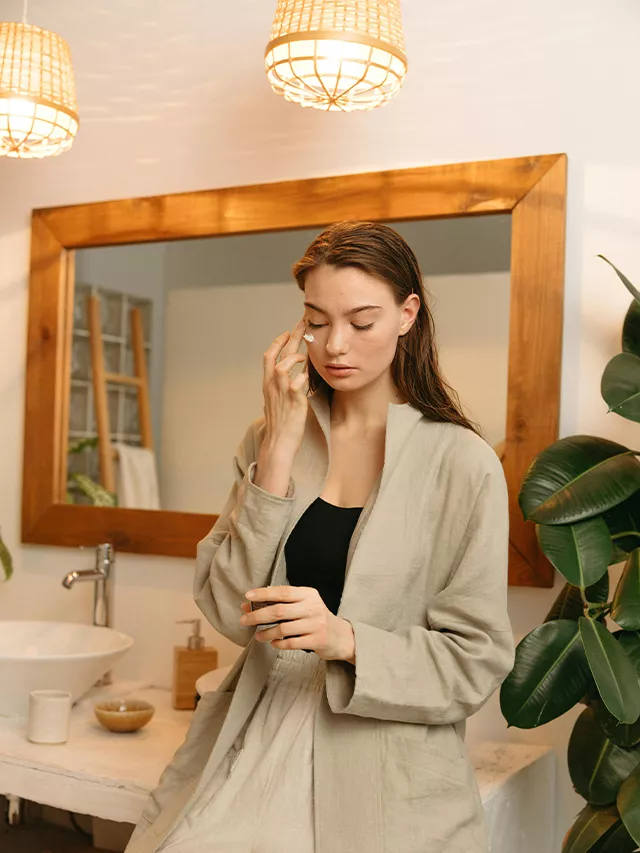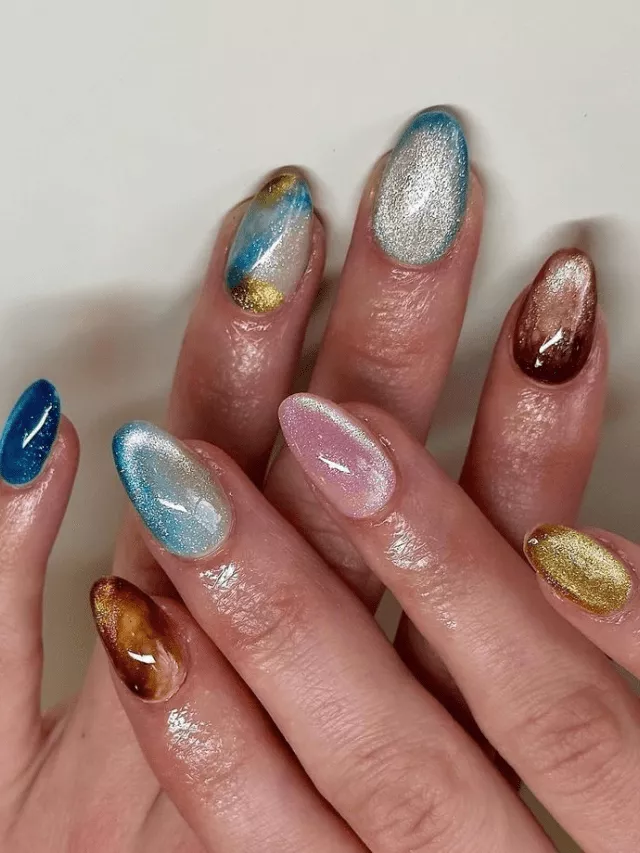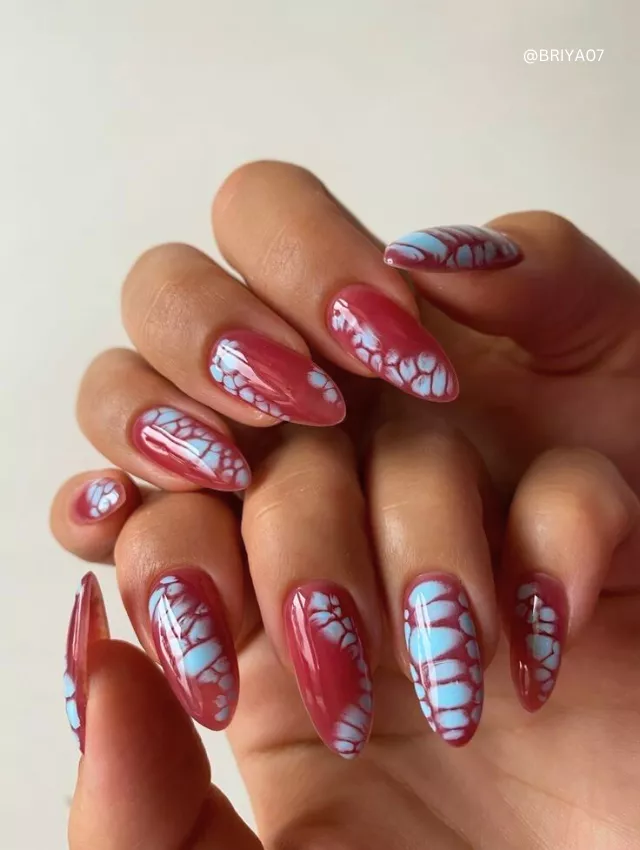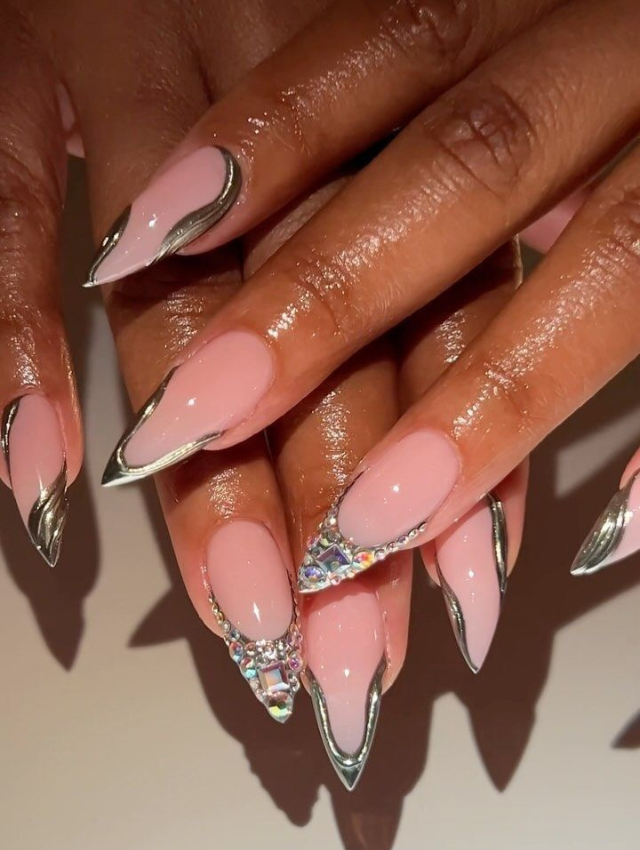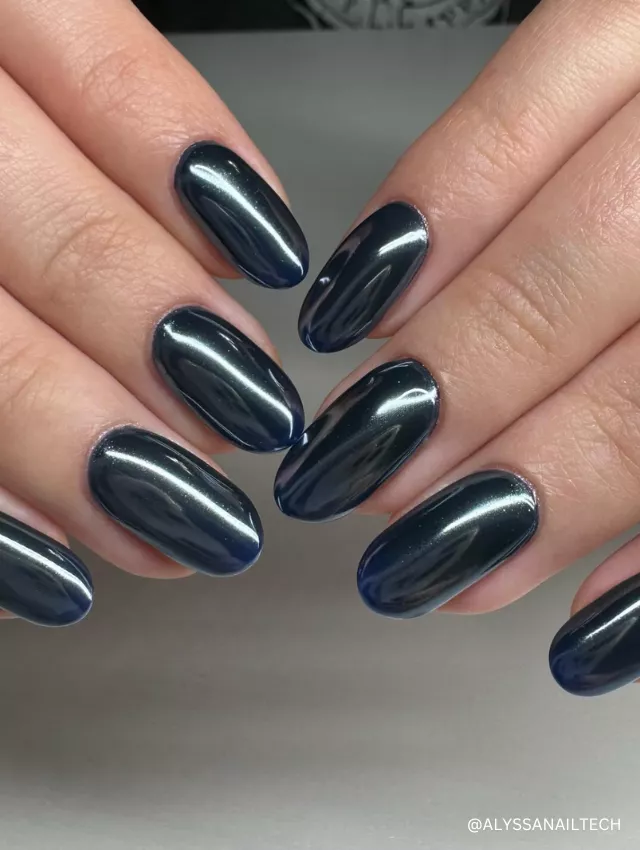Last Updated on February 16, 2025
Who doesn’t love a good pampering session? Whether it’s a fragrant shampoo, a luxurious face mask, or a soothing lotion, self-care products are a staple in our daily routines.
You lather creams onto your face and body, put on makeup, and apply your favorite lipstick to enhance your appearance. But have you ever thought about whether those products are safe to use?
Sadly, lots of toxic chemicals lurk in the luxurious jars and bottles of many self care essentials. People in the U.S. are exposed to an average of two ingredients that can harm the reproductive and development systems and two linked to cancer. Adults use at least twelve personal care products a day, containing over 100 chemical ingredients.
Skincare, body care, and cosmetic products are to blame for the exposure. That being said, we’ll explore a few common chemicals found in self care essentials and share practical tips to reduce exposure.
Toxic personal care products
Some toxic chemicals found in personal care products include parabens, phthalates, fragrances, and formaldehyde.
Parabens
- A common preservative that can cause skin irritation and disrupt hormones
- Isopropyl and isobutyl parabens can harm the reproductive system
Phthalates
- A plasticizer that can be found in shampoo and other products
- Can disrupt hormones and damage the reproductive system
- Can be endocrine disruptors to humans and aquatic animals
Fragrances
- Can cause respiratory disorders, skin allergies, dermatitis, and reproductive system side effects
- Can be found in perfumes, moisturizers, shampoos, cleansers, and conditioners
Formaldehyde
- A known carcinogen that can be found in hair smoothing products
- Also known as formalin and methylene glycol
- Formaldehyde-releasing preservatives are used to prevent bacteria
The Hidden Toxic Chemicals in Your Self-Care Products
Other toxic chemicals
- Mercury: Can damage the kidneys and nervous system
- Toluene: Can cause headaches, dizziness, cracked skin, reproductive damage, and respiratory complications
- Diethanolamine: Can damage the liver and kidneys
- 1, 4-Dioxane: A known toxin that can cause genotoxicity in the human body and may be linked to cancer
- Per- and polyfluoroalkyl substances (PFAS): Have been linked to cancer
Most self-care products you find on the market are loaded with harmful chemicals. We’ll discuss the most common ones you’ll find in this section:
1. Butylated Hydroxyanisole (BHA)
If you look at the list of ingredients for eyeliners, lipsticks, or moisturizers, you’re sure to find butylated hydroxyanisole or BHA. This is a synthetic, waxy, solid petrochemical with antioxidant properties that is used in personal care products as a preservative. It basically prevents the oxidation of oils and fats in them.
However, its addition to personal care products is problematic since it’s anticipated to be a human carcinogen by the U.S. Department of Health and Human Services. A feature released by the Association for the Advancement of Restorative Medicine reveals that BHA has been found to cause cancer in some animal studies.
It can also cause temporary liver enlargement, hemorrhage (bleeding), and lung damage. In skin patch tests, this synthetic antioxidant causes contact dermatitis. However, BHA is found in a wide range of products, including sunscreen, deodorant, creams, fragrances, lip products, and hair products.
2. Talc
Talc, a naturally occurring mineral substance, is another toxic ingredient found in many personal care products. Whether it’s your favorite setting and perfecting powder from Maybelline or Urban Decay eyeshadow, talc is added to a variety of beauty products.
It smooths and softens them, absorbs moisture, makes makeup opaque, and prevents caking. However, the concern with talc is its potential contamination with asbestos, a known carcinogen.
When inhaled, asbestos-contaminated talc can cause serious health issues, including lung cancer and mesothelioma. An article published in NIH discloses that asbestos exposure causes most mesothelioma. This toxic substance is also linked with cancers of the ovary, larynx, and the lung.
Recently, women have sued big beauty brands because their talc-based makeup caused them to develop asbestos-related mesothelioma. Tens of thousands of asbestos lawsuits have been filed against Maybelline, Clinique, L’Oreal, Chanel, Mary Kay, and New Avon.
However, exposure to asbestos doesn’t only take place due to makeup products. You can be exposed to it through building materials. This carcinogen was used in many building materials until the 1970s.
When asbestos fibers are inhaled, TorHoerman Law explains, they adhere to the mucus in the throat, bronchi (big breathing tubes in the lungs), or trachea (windpipe). While chrysotile fibers are often cleared through cough, thin amphibole fibers are not. Those fibers injure mesothelial cells of the pleura, causing mesothelioma.
3. Formaldehyde
A new report released by the Washington State Department of Ecology has discovered high levels of formaldehyde in personal care and cosmetic products marketed mostly to people of color. Yes, it’s the same chemical that is used in embalming. Some products mentioned in the report are ORS Lock & Twist Styling Gel, Pantene Gold Series Curl Defining Pudding, Aussie Miracle Curls Crème Pudding, and Olay Firming Night Cream. Thankfully, you can find sites that have researched for you to find safe beauty products, with these ingredients.
The IARC has classified formaldehyde as “carcinogenic to humans.” Exposure to this chemical can cause certain types of cancers, such as leukemia and cancers of the nasal cavity, paranasal sinuses, and nasopharynx.
Now, you must be wondering—if formaldehyde is so toxic, then why is it added to self care essentials? The explanation is simple: it is used as a preservative to prevent the growth of bacteria and other microorganisms and extend the shelf life of products.
4. Silicones
Silicones have become one of the key ingredients in an array of products, including sunscreens, moisturizers, and color cosmetics, reveals the National Institutes of Health.
These compounds are added to them because they make the skin feel velvety, hair silky, and makeup glide on like a dream.
Silicones don’t actually nourish your skin or hair, however. They are more like a temporary fix, sitting on the surface to create that smooth feel. Worse, they can trigger autoimmune problems and weaken the immune system. Silicones are also known to trigger allergies such as hives and eczema.
Anything that ends in -siloxane or -cone is silicone. Common names for silicones in cosmetics include cyclopentasiloxane, cetearyl methicone, cyclohexasiloxane, cyclomethicone, and dimethicone.
5. Per- and Polyfluoroalkyl Substances
The dangers of per- and polyfluoroalkyl substances, or PFAS, are well-documented. Yet, these harmful substances have been detected in various personal care products, reveals CBS News.
As per ScienceDirect, 11 emerging PFAS in cosmetics were confirmed. Of them, the most common were perfluorodecalin and polytetrafluoroethylene.
These man-made chemicals are widely used in personal care and cosmetic products primarily for their water-resistant properties. PFAS also smoothens and conditions the skin and hair.
The problem, however, is that these chemicals do not naturally break down—no wonder they are also called forever chemicals. According to The Guardian, they are linked with kidney disease, several types of cancers such as testicular, immune disorders, liver problems, and birth defects.
Perfluoro in the ingredients list indicates the presence of PFAS compounds in the product.
The Environmental Working Group, or EWG, advises looking out for perfluorodecalin, C9-15 fluoroalcohol phosphate, perfluorohexane, polyperfluoroethoxymethoxy difluoroethyl peg phosphate, and methyl perfluorobutyl ether. Products with these ingredients are packed with PFAS.
Tips to Limit Your Exposure to Chemicals Found in Self-Care Products
Here are a few tips that will help you limit your exposure to the toxic ingredients found in self-care products:
- Steer clear of products with a lengthy ingredient list. These could contain unnecessary chemicals that could be detrimental to your health.
- Choose products with natural, recognizable ingredients and go for brands that focus on clean beauty. They often avoid using harmful chemicals.
- Whenever you’re unsure about an ingredient, research it. Websites like the Environmental Working Group’s Skin Deep database can provide information on the safety of various ingredients.
- Avoid products whose ingredient list contains “fragrance.” They can hide a multitude of chemicals. Choose fragrance-free products or those scented with natural essential oils.
- Opt for products with natural, organic ingredients. Certifications like USDA Organic and EWG Verified indicate higher safety standards.
All things considered, most self care essentials—be it baby powder, hair smoothing products, or moisturizers—contain toxins. Exposure to those chemicals can cause several types of cancers, lung damage, and other health issues.
You can, however, limit your exposure to them by opting for natural and organic products and reading the labels of products before buying. Embrace safer alternatives and support transparent, clean beauty brands. That will further enhance your well-being.
Cat Eye Nails Are the Ultimate Trend: Here Are Dazzling Designs to Try 2025!
Cat eye nails are the ultimate trend in…
Blooming Gel Nails: The Dreamy Watercolor-Inspired Manicure You Need to Try
Blooming gel nails are a must-try trend for…
10 Stunning Stiletto Nails That Will Transform Your Look Instantly
If you’re looking to make a bold statement…
Black Nails: Chic, Bold & Timeless Nail Design Ideas
Black nails continue to be a bold and…
- Successible Life Staffhttps://successiblelife.com/author/successible-life-staff/
- Successible Life Staffhttps://successiblelife.com/author/successible-life-staff/
- Successible Life Staffhttps://successiblelife.com/author/successible-life-staff/
- Successible Life Staffhttps://successiblelife.com/author/successible-life-staff/

